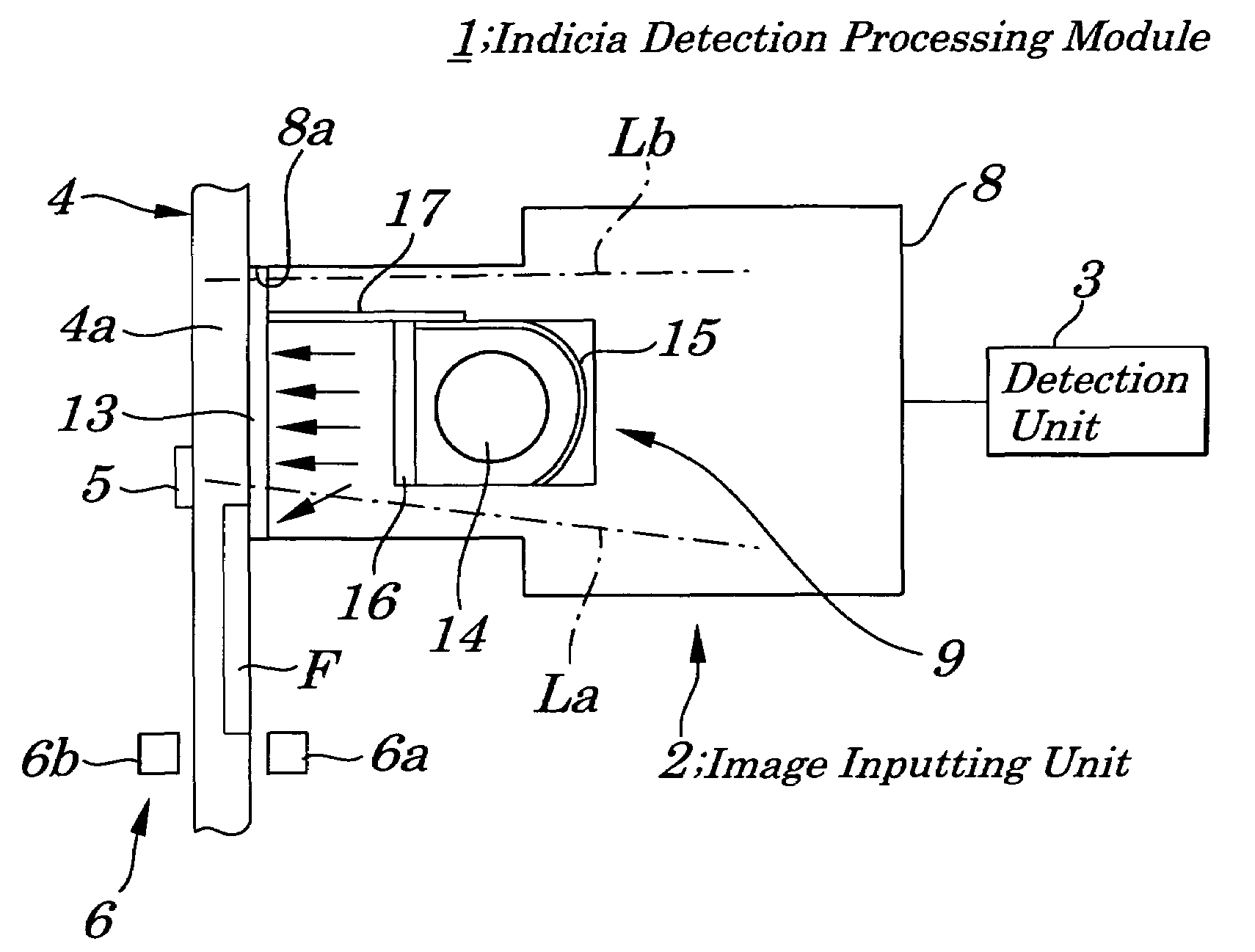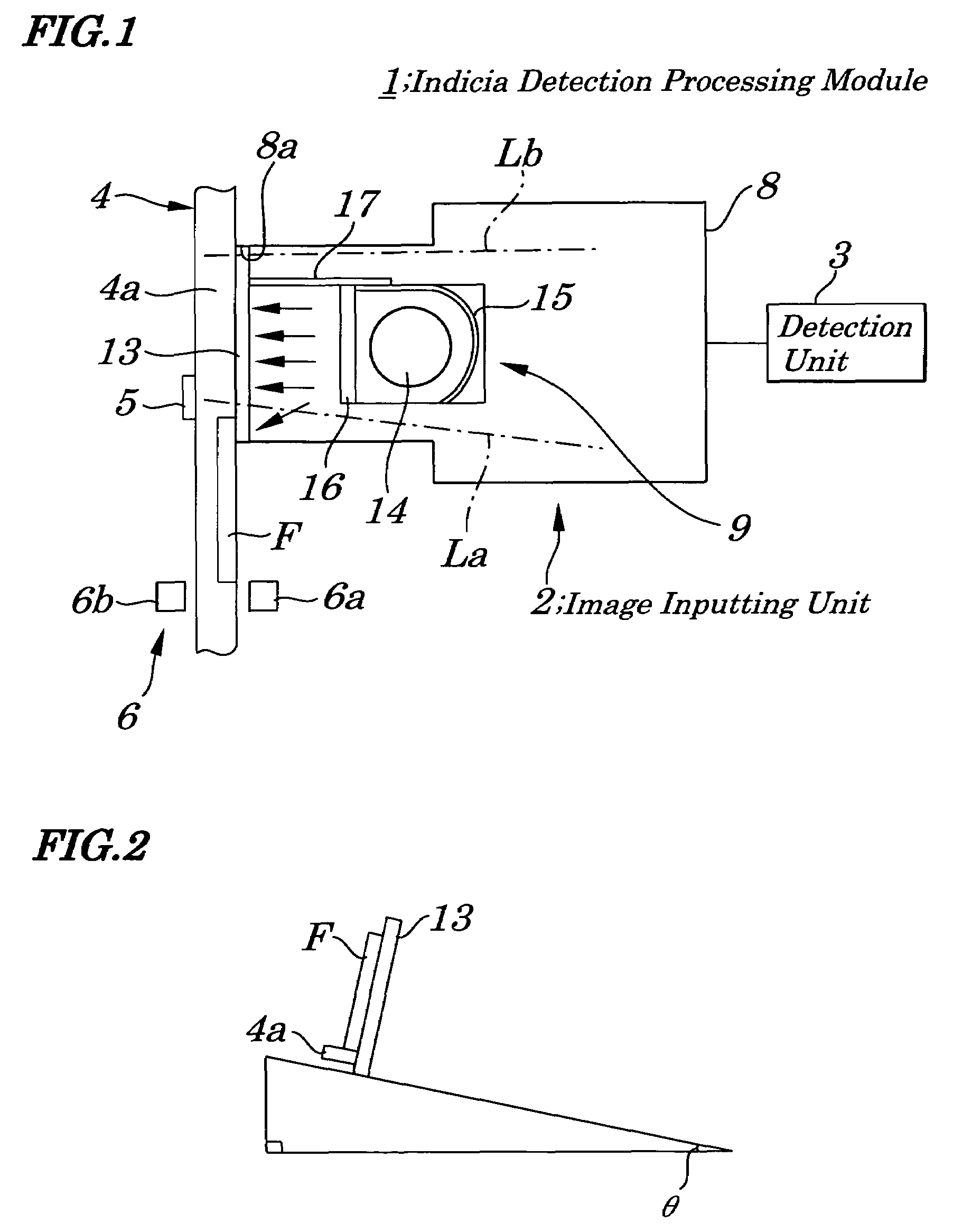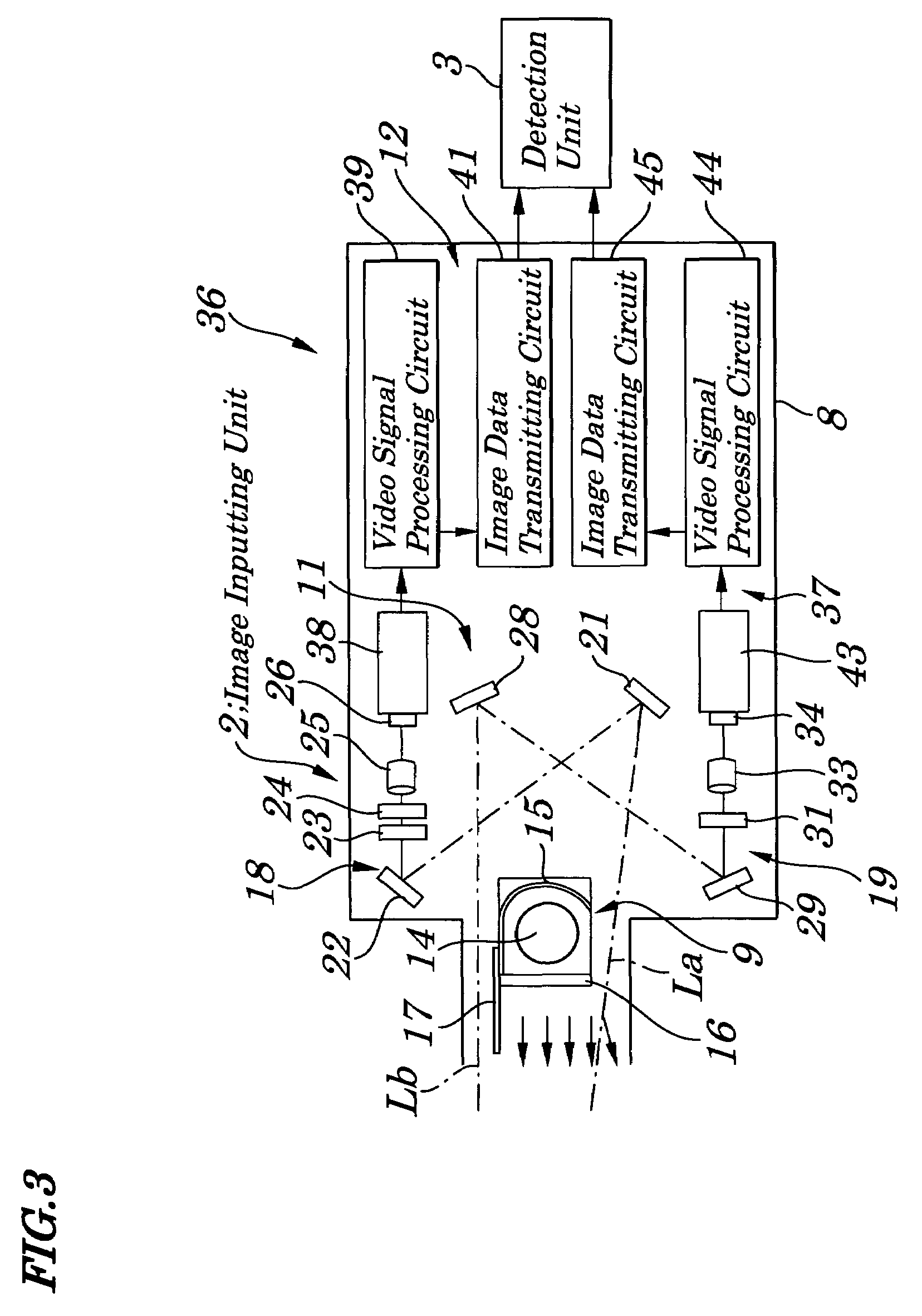Image inputting device
a technology of inputting device and image, which is applied in the direction of paper-money testing device, fluorescence/phosphorescence, instruments, etc., can solve the problems of reducing the merits obtained by automatic detection of process, reducing the size of the mail and the device, and reducing the number of components. , the effect of reducing the number of components
- Summary
- Abstract
- Description
- Claims
- Application Information
AI Technical Summary
Benefits of technology
Problems solved by technology
Method used
Image
Examples
first embodiment
[0064]FIG. 1 is a diagram schematically illustrating configurations of an indicia detection processing module 1 of a first embodiment of the present invention. FIG. 2 is a diagram explaining configurations of the indicia detection processing module 1 of the first embodiment. FIG. 3 is a diagram schematically illustrating configurations of the indicia detection processing module of the first embodiment. FIG. 4 is a diagram showing an example of an image to be captured by detecting units making up the indicia detection processing module 1 of the first embodiment.
[0065]The indicia detection processing module 1 of the embodiment includes an image inputting unit 2 making up a culling-facing-canceling machine for nonstandard size postal matter (flat mail) to make an nonstandard size postal matter “F” be radiated with ultraviolet light and to receive fluorescence and phosphorescence from an indicia, such as a postage stamp, a permit imprint, a meter (postage paid) or a like affixed to and ...
second embodiment
[0089]FIG. 5 is a diagram schematically illustrating configurations of an indicia detection processing module according to a second embodiment of the present invention. The configurations of the indicia detection processing module of the second embodiment differs from those of the first embodiment in that a phosphorescence receiving optical system is not so configured that it can receive two phosphorescence emitting colors (for example, green and red colors) emitted from an indicia unlike in the conventional case where the indicia detection processing module can receive one single phosphorescence emitting color (for example, green color only). Configurations other than those described above are the same as those in the first embodiment and their descriptions are omitted accordingly.
[0090]An image inputting unit 51 employed in the indicia detection processing module of the second embodiment includes a housing 8, a light radiating section 9, a light receiving section 52 to receive flu...
third embodiment
[0095]FIG. 6 is a diagram schematically illustrating configurations of an indicia detection processing module 71 of a third embodiment of the present invention. FIG. 7 is a diagram schematically showing configurations of an indicia detection processing module of the third embodiment. FIG. 8 is a time chart explaining operations of the indicia detection processing module of the third embodiment. The indicia detection processing module of the third embodiment differs from those of the first embodiment in that an ultraviolet light LED (Light Emitting Diode) is used as a light source, instead of an ultraviolet fluorescent lamp, and receives fluorescence or phosphorescence on a same optical path by turning ON / OFF an ultraviolet light LED and fluorescence and phosphorescence images are detected according to timing of the ON / OFF operations. Configurations other than those described above are the same as those in the first embodiment and their descriptions are omitted accordingly.
[0096]The ...
PUM
| Property | Measurement | Unit |
|---|---|---|
| thickness | aaaaa | aaaaa |
| height | aaaaa | aaaaa |
| size | aaaaa | aaaaa |
Abstract
Description
Claims
Application Information
 Login to View More
Login to View More - R&D
- Intellectual Property
- Life Sciences
- Materials
- Tech Scout
- Unparalleled Data Quality
- Higher Quality Content
- 60% Fewer Hallucinations
Browse by: Latest US Patents, China's latest patents, Technical Efficacy Thesaurus, Application Domain, Technology Topic, Popular Technical Reports.
© 2025 PatSnap. All rights reserved.Legal|Privacy policy|Modern Slavery Act Transparency Statement|Sitemap|About US| Contact US: help@patsnap.com



